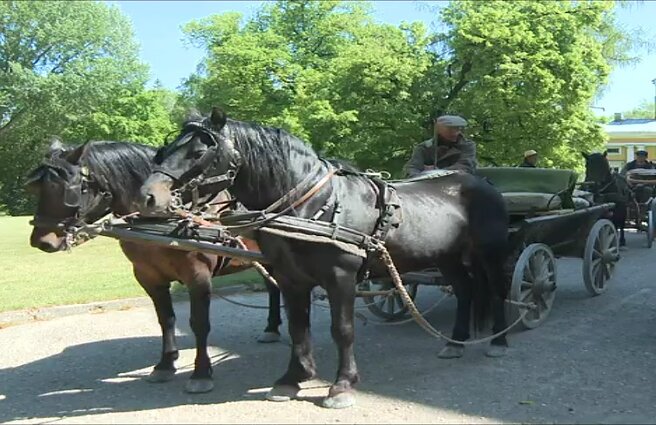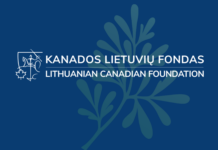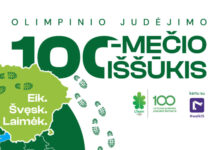
Most of us know about the Lithuanians from the west of the country, living in a region called “Žemaitija” – the Lowlands, or Samogitia in Latin. Žemaičiai are well-known for their perseverance (not to say obstinacy), a type of potato pancake with meat filling (žemaičių blynai), and their dialect, which when spoken by natives is rarely understandable to other Lithuanians. They are a proud people, certain to identify themselves as Žemaičiai in their first conversation with a stranger.
Vaidotas Digaitis is from Žemaitija, and is a known traveller – or long-rider. He rode from the Baltic Sea in Lithuania to the Black Sea in Ukraine. He next completed a journey around the Baltic Sea to the Arctic Circle and back. He pioneered a route around Lithuania. Then rode 3,000 kilometres (1,800 miles) from Lithuania, across Russia, over the Ural Mountains and into Asia.
 At the end of May of this year, he led a team of riders on a 300-kilometre trek across Lithuania to promote a native horse breed, the Samogitian (Žemaitukas). After leaving Lithuania’s southwestern region of Šilalė, the travellers rode via Panevėžys to the Horse Museum in Anykščiai, on a narrow-track road, along the same routes as their ancestors took.
At the end of May of this year, he led a team of riders on a 300-kilometre trek across Lithuania to promote a native horse breed, the Samogitian (Žemaitukas). After leaving Lithuania’s southwestern region of Šilalė, the travellers rode via Panevėžys to the Horse Museum in Anykščiai, on a narrow-track road, along the same routes as their ancestors took.
During the week, the participants experienced Lithuanian hospitality, the challenges of travelling in wooden carts, and the most remote village roads. They also camped under the open sky (in what Digaitis calls the “thousand-star hotel”) – or under their carts.The trek was planned to raise awareness of the native horse breed that organizers say is among the oldest in Europe.
The Samogitian horses, which were associated with the Grand Duchy of Lithuania, were renowned as one the world’s finest breeds of fighting horses. However, they have now been on the verge of extinction.
“After independence, when there was a need to import other breeds, larger ones, they were undeservedly forgotten because of their small stature,” says Rūta Šveistienė, head of the Centre of the Institute of Animal Husbandry at the Lithuanian University of Health Sciences (LSMU).
“The Samogitian horses are the oldest known breed not only in Lithuania but also in Europe. It is an excellent genetic pool, a breed that has been the least influenced by other breeds,” says Šveistienė.
Today, there are about 900 such horses in Lithuania. The population is still under threat, as only a few dozen are born each year.



























